Vietnam Visa Policy: Requirements, Entry Rules
Vietnam visa policy plays a crucial role in shaping the country’s tourism and international relations landscape. The Vietnamese government has made many changes over the years. These reforms aim to simplify visa processes, attract more foreign visitors, and encourage business exchanges.
Whether you are planning a short vacation or a long stay, knowing the latest Vietnam visa policy is important. This will help you have a smooth entry and stay in the country.
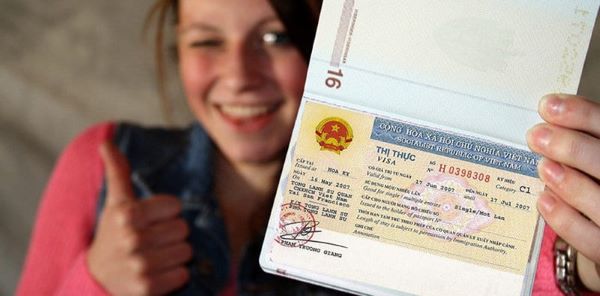
Stay updated on Vietnam visa policy for a smooth and successful trip
A comprehensive guide to Vietnam Visa types
Vietnam offers a wide array of visas, each with a specific symbol corresponding to the holder’s purpose of entry. Choosing the correct visa type is fundamental to a compliant and hassle-free stay.
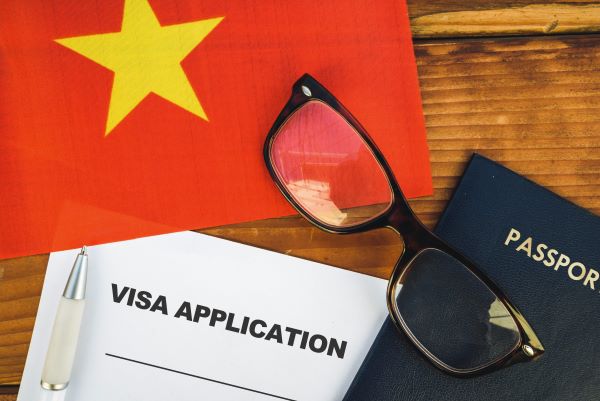
Know your Vietnam visa type to travel with ease and confidence
Here is a breakdown of the most common Vietnam visa types:
| Visa Symbol | Visa Name | Purpose of Entry | Typical Validity |
|---|---|---|---|
| DL | Tourist Visa | Tourism, visiting sights and short-term leisure activities. | Up to 90 days |
| EV | Electronic Visa (E-Visa) | Traveling for tourism, business or short visits. | Up to 90 days (Single or Multiple Entry) |
| DN1/DN2 | Business Visa | DN1: For working with Vietnamese businesses under local law. DN2: For offering services, commercial presence or other activities under international treaties. |
Up to 12 months |
| ĐT1 – ĐT4 | Investor Visa | For foreign investors and their legal representatives in Vietnam. The validity (from 1 to 5 years) depends on the capital contribution. | 1 to 5 years |
| LĐ1/LĐ2 | Work Visa | For foreigners who work in Vietnam. Requires a work permit or a certificate of work permit exemption. | Up to 2 years |
| TT | Dependent/Relative Visa | For spouses or children (under 18) of foreigners holding certain Vietnamese visas (e.g., LV1, ĐT, NN1, DH, LĐ). | Matches the validity of the sponsor’s visa, up to 12 months. |
| VR | Visiting Relatives Visa | For those visiting relatives in Vietnam (not covered by the TT visa). | Up to 6 months |
| DH | Student/Internship Visa | For individuals entering Vietnam for study or internships. | Up to 12 months |
Note: The validity period indicates the maximum duration the visa can be issued for. The actual length of your stay permitted will be stamped in your passport upon entry. Understanding these Vietnam visa types is the first step in a successful application.
Who can enter Vietnam without a Visa? The Vietnam Visa exemption policy explained
One of the most significant updates to the Vietnam visa policy is the expansion of its visa exemption program. This lets people from many countries visit Vietnam for a short time without needing a visa first.
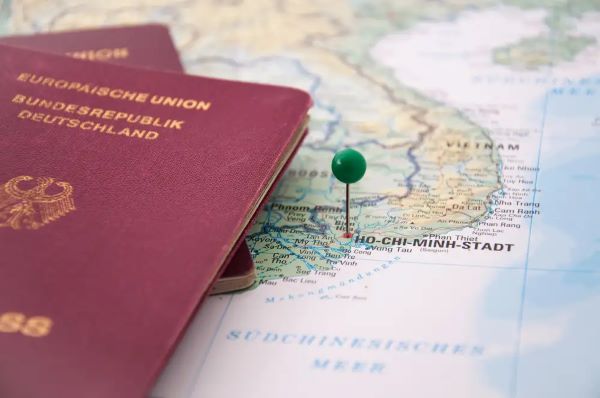
Enjoy visa-free travel to Vietnam with expanded exemptions
Unilateral Visa Exemption
As of the latest regulations, Vietnam grants unilateral visa exemption to citizens of 13 countries. Visitors from these countries can stay for up to 45 days after they enter. This rule applies to all passport types and reasons for visiting.
The countries include:
- Germany
- France
- Italy
- Spain
- United Kingdom (UK)
- Russia
- Japan
- South Korea (ROK)
- Denmark
- Sweden
- Norway
- Finland
- Belarus
To enjoy this exemption, your passport must be valid for at least 6 months. You also need proof of onward travel, like a return flight ticket.
Visa Exemption for ASEAN Countries
Most citizens from ASEAN countries do not need a visa to visit Vietnam for short stays.
- 30-Day Exemption: Thailand, Malaysia, Cambodia, Laos, Singapore, Indonesia.
- 21-Day Exemption: Philippines.
- 14-Day Exemption: Brunei, Myanmar.
The Phu Quoc Island Special Visa Exemption
To promote tourism to its largest island, Vietnam offers a special visa exemption for visitors to Phu Quoc. Foreigners can visit and stay on Phu Quoc Island for up to 30 days without a visa.
Key Conditions:
- You must enter and exit Phu Quoc via an international port of entry (air or sea).
- Your stay must be confined to Phu Quoc Island. To visit other parts of Vietnam, you must obtain a visa.
- This is ideal for travelers who fly directly to Phu Quoc International Airport (PQC) from another country.
For the most current list and regulations, always check the official Vietnam Consular Affairs Department website. This part of the Vietnam visa policy is designed to make short-term tourism seamless.
The Vietnam E-Visa: Your Step-by-Step application guide
The Vietnam E-Visa is the most popular and convenient option for travelers from around the globe. As of August 15, 2023, the E-Visa program is open to citizens of all countries and territories. It allows for stays of up to 90 days and can be issued for single or multiple entries. This is a cornerstone of the modern Vietnam visa policy, simplifying the entire application process.
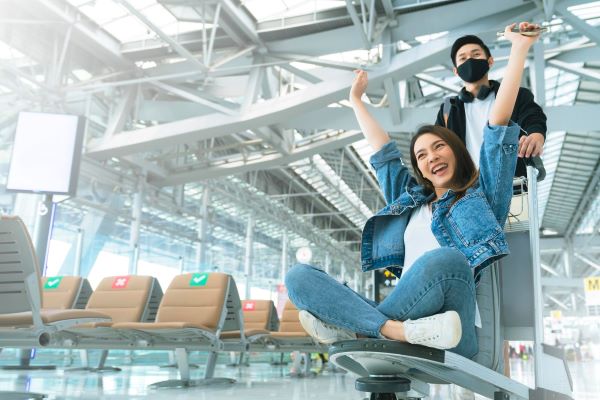
Apply for your Vietnam E-Visa online fast, simple and now open to all nationalities
How to Apply for a Vietnam E-Visa: A 6-Step Process
Applying for a Vietnam E-Visa is done entirely online. Follow these steps closely to avoid mistakes.
Step 1: Access the Official Government Portal
Navigate to the one and only official Vietnam E-Visa website: https://evisa.xuatnhapcanh.gov.vn/. Be wary of imitation sites that charge exorbitant extra fees.
Step 2: Prepare Your Documents
You will need:
- A high-quality digital scan of your passport’s data page (must be valid for at least 6 months).
- A recent digital portrait photo (4×6 cm, white background, no glasses), meeting standard passport photo requirements.
Step 3: Complete the Online Application Form
Fill out the form with your personal information exactly as it appears on your passport. Double-check all details, including your full name, date of birth, passport number, and dates of entry/exit. Any discrepancy can lead to your E-Visa being rejected or denied entry upon arrival.
Step 4: Pay the E-Visa Fee
The government fee for the E-Visa is paid directly on the portal.
- Single-entry E-Visa: $25 USD
- Multiple-entry E-Visa: $50 USD
This fee is non-refundable, even if your application is denied.
Step 5: Receive Your Registration Code
Once you’ve paid, you’ll get a registration code. Keep this code safe, as you will need it to check the status of your application.
Step 6: Check Status and Download Your E-Visa
The standard processing time is 3-5 business days. Use your registration code on the official portal to check your status. Once approved, download the E-Visa PDF file and print at least two copies. You must present a printed copy to the immigration officer upon arrival in Vietnam.
The E-Visa is valid at numerous international airports, land crossings and seaports.
>>> Refer to the article: How to get urgent Vietnam visa on arrival in a short time or even last minutes?
Vietnam Visa on Arrival (VOA): Is it still a viable option?
Before the E-Visa system was common, many travelers used the Vietnam Visa on Arrival (VOA). This option was popular for those flying into the country. While it still exists, its relevance has significantly diminished.
How VOA Works:
- Obtain an Approval Letter: You must apply for a “Visa Approval Letter” through a third-party visa agent in Vietnam before your trip. This is not an official government service.
- Fly to Vietnam: VOA is only available at a few major international airports (Hanoi, Ho Chi Minh City, Da Nang, Nha Trang, Hai Phong).
- Get the Visa Stamp: At the airport, you must go to the “Visa on Arrival” or “Landing Visa” counter. You’ll need to present your passport, the approval letter, two passport photos, and pay a stamping fee in cash (USD or VND).
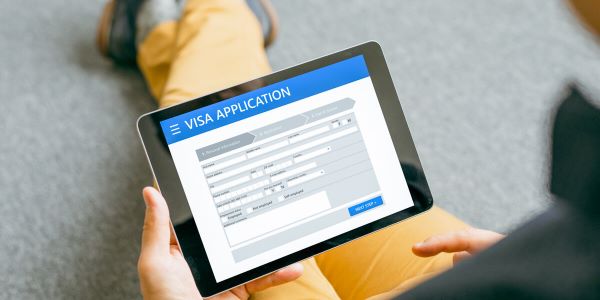
With E-Visa now available to all, Vietnam Visa on Arrival is no longer the go-to choice for travelers
Drawbacks of VOA:
- Complexity: It involves a third-party agent and an in-person process at the airport.
- Queues: The VOA counter can have long queues, especially during peak hours.
- Limited to Air Travel: It is not available at land borders.
- Confusion: Many travelers confuse VOA with “getting a visa at the airport without any prior paperwork,” which is incorrect and will result in denied entry.
The E-Visa is efficient and easy to get. Because of this, the Vietnam Visa on Arrival is not the best choice for most travelers. The E-Visa is cheaper, more direct and more secure.
Extending your stay: How to apply for a Vietnam Visa extension
What if you fall in love with Vietnam and want to stay longer? Extending your visa is possible, but the process has become more stringent. The feasibility and procedure depend heavily on the type of visa you hold.
- Tourist Visas (DL, E-Visa): Tourist visa holders can typically extend their stay by applying through a reputable travel or visa agency. The agency acts as a sponsor and handles the paperwork with the Vietnam Immigration Department. You will need to submit your original passport. Extensions are usually granted for 15 to 30 days at a time.
- Business, Work and Investor Visas (DN, LĐ, ĐT): If you are in Vietnam on a business, work or investment visa, your sponsoring company or organization must handle the extension process. This involves submitting an application to the local Immigration Department where the company is registered.
Important Considerations:
- Apply Early: Start the extension process at least 7-10 business days before your current visa expires.
- Overstaying is a Serious Offense: Staying past your visa’s end date can lead to large fines. It may also make it hard to enter Vietnam again in the future.
- Regulations Can Change: The rules for Vietnam visa extension can change with little notice. Always best to consult with the Immigration Department or a trusted visa service for the most current advice.
Vietnam investment Visas: Opportunities for entrepreneurs and investors
To attract foreign capital and talent, Vietnam’s visa policy has special categories for investors. These visas provide long-term residency. The amount of money investors put into a Vietnamese company connects them.
- ĐT1 Visa: Granted to investors with a capital contribution of 100 billion VND (~$4 million USD) or more. Valid for up to 5 years.
- ĐT2 Visa: For investors with a capital contribution from 50 to under 100 billion VND (~$2-4 million USD). Valid for up to 5 years.
- ĐT3 Visa: For investors with a capital contribution from 3 to under 50 billion VND (~$125,000 – $2 million USD). Valid for up to 3 years.
- ĐT4 Visa: For investors with a capital contribution of less than 3 billion VND (~$125,000 USD). Valid for up to 12 months.
People with ĐT1, ĐT2 and ĐT3 visas can apply for a Temporary Residence Card (TRC). This card matches their visa duration. It makes living and traveling in and out of Vietnam easier.
Frequently Asked Questions (FAQ)
Here are answers to some common questions about the Vietnam visa policy.
1. Do I need a visa to visit Vietnam?
It depends on your nationality and the length of your stay. Check the visa exemption list in Section III. If your country is not on the list, or if you plan to stay longer than the exemption period, you will need a visa. The 90-day E-Visa is the best option for most tourists.
2. What is the difference between an E-Visa and a Visa on Arrival?
The E-Visa is an electronic visa. You apply for it online from the Vietnamese government before you travel.
The Visa on Arrival (VOA) needs you to get a pre-approval letter from an agent. You will then have the visa stamped in your passport when you arrive at the airport. The E-Visa is now the superior and recommended method.
3. How much does a Vietnam visa cost?
- E-Visa: $25 USD for single-entry, $50 USD for multiple-entry.
- Visa on Arrival: There are two fees. First, you pay a service fee to the agent for the approval letter.
This fee varies and is usually between $15 and $50. Second, there is a stamping fee at the airport. This fee is $25 for a single-entry visa and $50 for a multiple-entry visa.
4. How long does the Vietnam visa application take?
The official processing time for an E-Visa is 3-5 business days. Applying at least 1-2 weeks before your trip is wise.
5. I made a mistake on my E-Visa application. What should I do?
The E-Visa system does not allow for amendments after submission. If you find a mistake, the only solution is to apply for a new E-Visa with the correct information. The fee for the incorrect application is non-refundable.
6. What are the latest updates to the Vietnam visa policy?
The most significant recent updates (from August 2023) are:
- The E-Visa is now valid for 90 days. You can choose between single and multiple entry options.
- The E-Visa program is now open to citizens of all countries and territories.
- The authorities have tripled the duration for unilateral visa exemption for 13 countries from 15 to 45 days.
In conclusion, it is important to stay updated on the latest Vietnam visa policy. This is essential for anyone who plans to visit or work in the country. With continuous updates and improvements, the policy reflects Vietnam’s commitment to openness and global integration.
Travelers can have a smooth and easy experience when entering Vietnam by following the current rules. Apply now for your Vietnam visa to ensure a smooth and hassle-free entry into the country!
>>> You may want to know: Vietnam Visa Charges: Latest Fees, Types & Payment Guide

